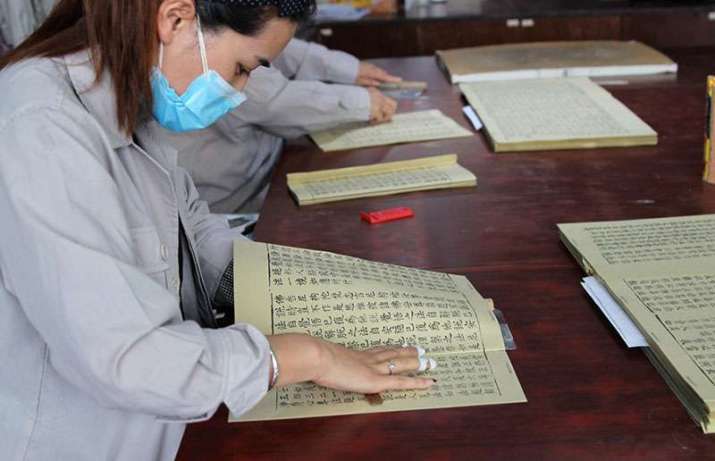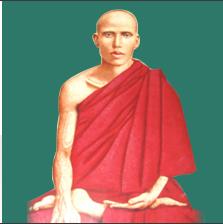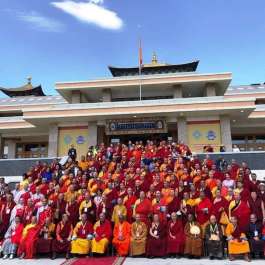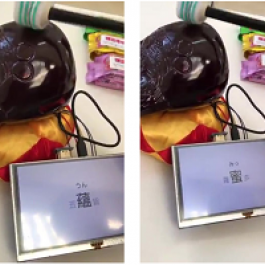
A joint team of Chinese and Japanese scholars on Saturday marked the completion of a mammoth undertaking began in 2012 to reprint a rare 5,500-volume translation of the Tripitaka from China’s Song dynasty (960–1279).
The team of scholars gathered at a ceremony in the city of Huzhou, in China’s eastern Zhejiang Province, to mark the first publication of the ancient texts, reproduced using traditional techniques, after more than 1,000 years.
Tripitaka is the traditional term to describe the three main categories or “baskets” of canonical texts that make up the Buddhist scriptures for the various schools of Buddhism—traditionally the Sutra Pitaka (sermons and teachings), Vinaya Pitaka (monastic rules), and Abhidharma Pitaka (discourses and interpretations). Each school had its own canonical collection containing variations in terms of the texts included, their content, and the ordering of texts. In the Mahayana and Vajrayana traditions, the Tripitaka does not entirely match the strict division of three pitakas found in the Theravada school.
“Japanese scholars made arduous efforts to make the project possible,” said National Library of China scholar Li Jining. “It will not only produce a complete collection of Buddhist classics, but serve as a landmark in the history of Sino-Japanese cultural exchange.” (Ecns.cn)
Project manager Xu Liling was unable to hold back her tears as she celebrated the hard work of bringing the project to fruition over the past seven years. “When the flash drive containing the missing classics was handed over to me from Japan, I held it tight in my arms,” she recalled. “I was just trembling, too excited to say a word.” (Ecns.cn)
First compiled at Sixi Yuanjue Monastery in Huzhou during the Northern Song dynasty (960–1126), the collection of texts, titled Sixi zang (思溪藏), was completed in 1132 but was later lost or destroyed due to war. However, a full set of the texts was found preserved at Iwaya-ji, a temple in Japan’s Ehime Prefecture, part of which was brought to China by the late-Qing dynasty historian, calligrapher, and diplomat. Yang Shoujing (1839–1915) between 1880 and 1884.
The National Library of China and Iwaya-ji were the first Chinese and Japanese institutions to receive copies of the reproduced Sixi zang.
See more
Ancient Buddhist collection reprinted (Ecns.cn)












